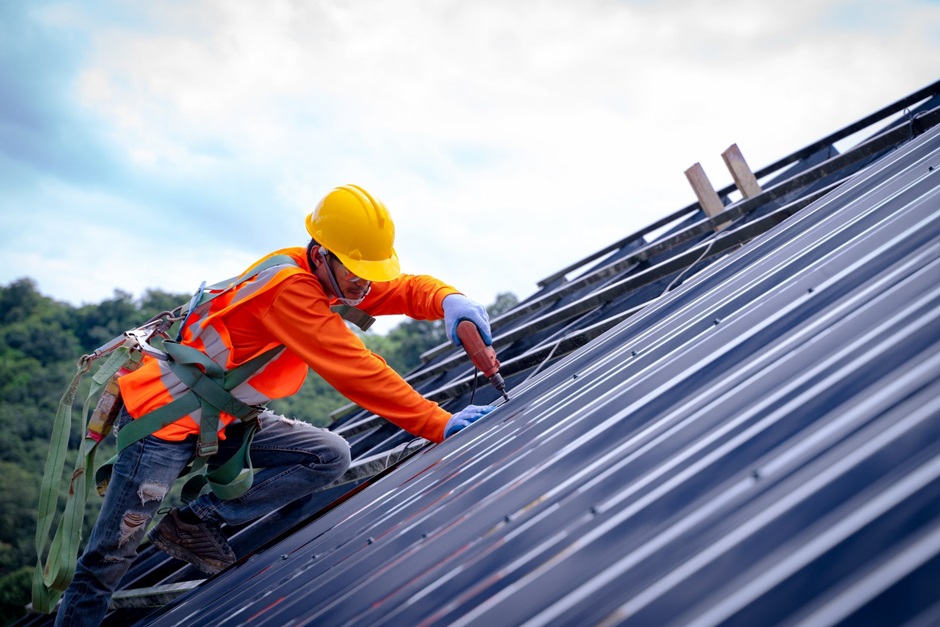
As homeowners increasingly seek durable, energy-efficient, and aesthetically pleasing roofing options, metal roofing has gained considerable popularity. This guide provides an in-depth look at the installation process and essential factors to consider when selecting a metal roofing company.
The Advantages of Metal Roofing
Before diving into installation and company selection, it’s crucial to understand the benefits of investing in metal roofing. Metal roofs are known for their longevity, often lasting 40-70 years, depending on the material and maintenance. They are resistant to extreme weather conditions, such as high winds, heavy rain, and snow, and can withstand fire, rust, and insect damage.
In addition to durability, metal roofing offers significant energy savings. Many metal roofs come with reflective coatings that help reduce cooling costs by reflecting solar heat. Furthermore, they can be made from recycled materials, making them an eco-friendly choice.
Roofing Installation: Understanding the Process
The installation of a metal roof requires careful planning and execution. Here is a step-by-step overview of the roofing installation process:
1. Assessment and Preparation
Before any physical work begins, a thorough assessment of the existing roof is essential. This may involve inspecting for structural issues, assessing the current roofing materials, and determining if any repairs are necessary. Homeowners should also consider their local climate and regulations, as these factors can influence the choice of metal roofing materials.
2. Material Selection
Various metal roofing materials are available, including aluminum, steel, copper, and zinc. Each material has its unique properties, costs, and aesthetic appeal. For instance, steel is often the most cost-effective option, while copper offers a distinctive look that can enhance the property’s value. Homeowners should consider their budget, desired aesthetics, and durability requirements when choosing materials.
3. Roof Preparation
Once materials are selected, the existing roof should be prepared for installation. This may involve removing old roofing materials, repairing the roof deck, and ensuring the structure can support the new metal roof. Proper preparation is crucial to ensure the longevity and performance of the new roofing system.
4. Installation of Underlayment
Before the metal panels are installed, an underlayment should be placed. This material acts as an additional layer of protection against moisture and can help regulate temperature. Common underlayment options include synthetic materials and felt paper.
5. Metal Panel Installation
With the underlayment in place, the metal panels can be installed. The panels are typically secured with screws and may be interlocked to provide additional strength and weather resistance. The installation process may vary based on the specific type of metal roofing chosen, such as standing seam or corrugated panels.
6. Finishing Touches
After the metal panels are secured, the final touches include installing flashings, trims, and accessories such as ridge caps and gutters. These elements help ensure that the roof is sealed and watertight, preventing leaks and enhancing the roof’s appearance.

Selecting the Right Metal Roofing Company
Choosing the right metal roofing company is vital to the success of your project. Here are some key considerations to keep in mind:
1. Experience and Reputation
When selecting a metal roofing company, consider their experience and reputation in the industry. Look for companies with a proven track record of successful installations and satisfied customers. Online reviews, testimonials, and referrals from friends or family can provide valuable insights into a company’s reliability.
2. Licensing and Insurance
Ensure that the roofing company is licensed and insured. A licensed contractor adheres to local building codes and regulations, while insurance protects you from liability in case of accidents during the installation process. Always request proof of both licensing and insurance before hiring a contractor.
3. Warranty and Service
Inquire about the warranties offered by the metal roofing company. A reputable contractor should provide a warranty covering both materials and workmanship. This protection ensures that any issues arising after installation will be addressed without incurring additional costs.
4. Portfolio of Previous Work
Ask potential roofing companies for a portfolio of their previous work. This will help you assess their craftsmanship and the types of projects they have completed. Look for projects similar to yours to gauge their capability and style.
5. Cost Estimates and Transparency
Obtain detailed cost estimates from multiple companies. The estimate should break down all costs, including materials, labor, and any additional services. Transparency in pricing can help you avoid unexpected expenses later in the project.
6. Communication and Professionalism
Effective communication is essential throughout the installation process. Choose a metal roofing company that demonstrates professionalism and is responsive to your questions and concerns. A good contractor will keep you informed about the project timeline and any issues that may arise.
Conclusion
Investing in metal roofing is a wise decision that offers numerous advantages, including durability, energy efficiency, and aesthetic appeal. By understanding the roofing installation process and carefully selecting a reputable metal roofing company, homeowners can ensure a successful and satisfying roofing project. With the right preparation and choice, a metal roof can provide long-lasting protection and enhance the value of your home for years to come.






